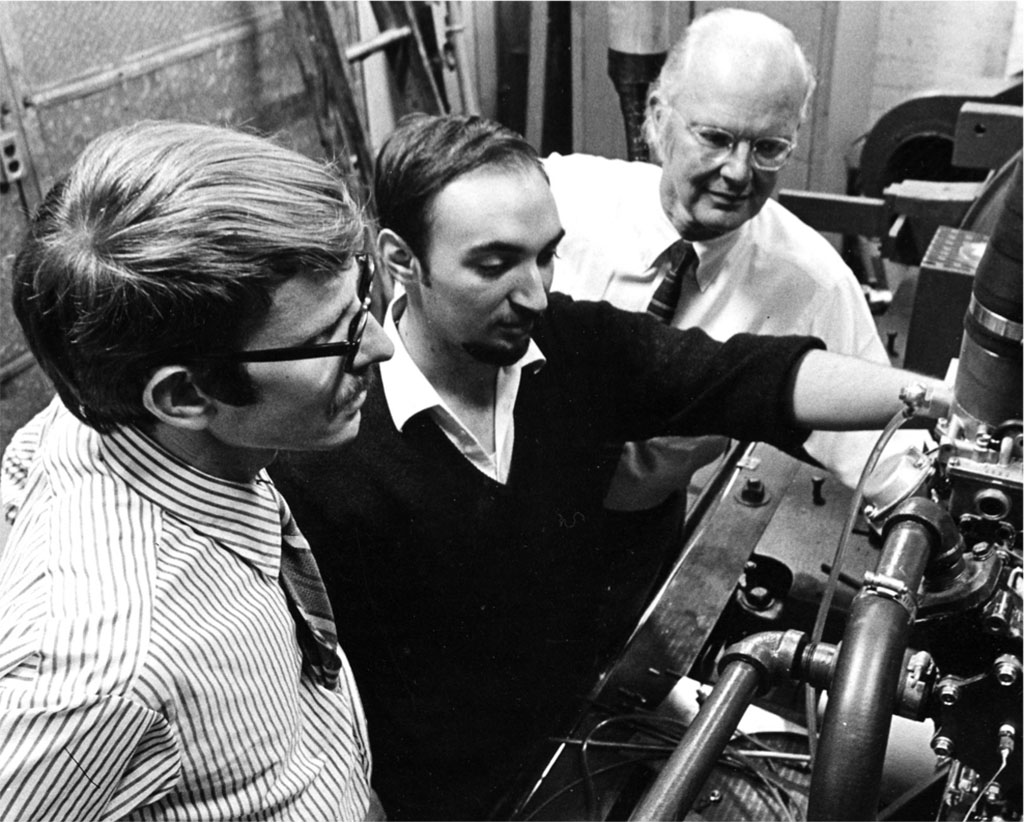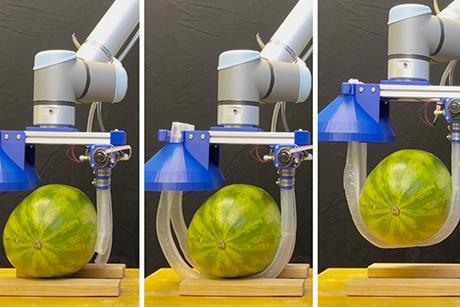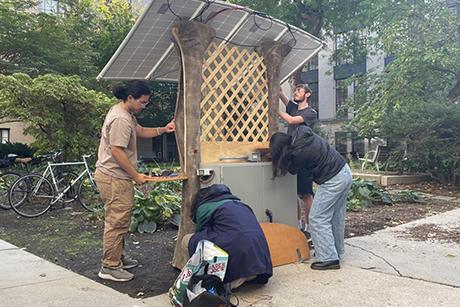Lifetime Achievement: Professor John Heywood
From identifying the source of emissions to analyzing the future of automotive engineering.
Professor John Heywood is one of the most recognizable and highly regarded names in internal combustion engines. His work with Professor James Fay and Professor James Keck in the MIT Sloan Automotive Laboratory in the 1960s and 1970s led to seminal contributions to the science of automotive and aircraft engines – and in particular to the understanding of emissions. He literally wrote the book on internal combustion engines, one that continues to be referred to today.
Following in the footsteps of his father, a mechanical engineer, and his mother, a chemist and metallurgist, Professor Heywood began his career at Cambridge University, earning a BA in mechanical engineering.
“I grew up in an academic family,” says the Englishman. “I did well in math and science, and I liked the idea of being practical. My dad did a lot of projects at home, and in fact he built early solar-water-heaters way back in the 1940s.
“I wasn’t really a tinkerer, but I loved hands-on projects and understanding things.”
Professor Heywood also enjoyed research and, after graduating in 1960, decided to move to Cambridge, Mass., to attend MIT for a master’s degree, and then a PhD, in mechanical engineering.
“I loved MIT,” he says. “People’s investment in what they did here and the intensity of their commitment to doing useful things was very apparent. Coming from a more restrained English culture, it was so refreshing.”
It was around that time that Professor Heywood met his future wife Peggy, who attended Radcliffe College studying history. The two eventually married and moved to England, where Professor Heywood worked on plasma dynamics for the Central Electricity Generation Board, looking at new ways to generate electricity. But by 1968, they were back in Cambridge, Mass.
Professor Heywood was offered a job as an assistant professor in the Sloan Automotive Lab, soon after Arie Jan Haagen-Smit had proven that automotive exhaust was a major contributor to Los Angeles smog, though no one yet knew how these emissions were produced.
“It was right at the point when we got involved in the question of why cars emit these significant amounts of air pollutants. By that time, people were convinced that air pollution from automobiles was indeed a major problem that impacted their health, and they really cared about it.”
The oxides of nitrogen that form inside the flame in the engine and the hydrocarbons that come out of the exhaust are the two ingredients that reacted in the atmosphere to form this smog, he explains. At the time, automobiles were the source of 50% to 60% of these emissions.
“Nitrogen was expected to go through combustion as a molecule (N2) and stay that way all the way through the process, even as it comes out of the exhaust,” he says, “and most of it did.
“But we discovered that some of it gets oxidized. So in those early days, we laid out the mechanism by which we got these NO molecules, and also the reasons why all of the fuel doesn’t burn inside the cylinder. There proved to be a pretty complicated set of reasons for the hydrocarbon emissions, and I think that’s where we made some important contributions.”
By 1972, Professor Heywood was the director of the MIT Sloan Automotive Lab, and the group’s research focus expanded to include a wider range of problems that arise out of the engine combustion process, including engine operation, fuel behavior, and engine performance and efficiency. He was joined by new young colleagues who today are faculty members and senior research scientists in the Lab, such as Professor Wai Cheng (see page X), Dr. Victor Wong, and Dr. Tian Tian.
“We really liked what we were doing, and it was very stimulating, because there were fresh problems that hadn’t been solved yet,” says Professor Heywood. “We discovered quite a lot and eventually were recognized as a major engines and fuels research lab in the United States.”
As part of this epicenter of engine research at such an important time of discovery, Professor Heywood gathered up a considerable amount of new fundamental knowledge that had yet to be codified. In fact, there hadn’t been a new textbook on internal combustion engines since C. Fayette Taylor’s two-volume text Internal Combustion Engine in 1961. So Professor Heywood decided to write one, and in 1988 he published Internal Combustion Engine Fundamentals, which has sold approximately 130,000 copies and is widely considered a field-defining publication.
“It was time,” says Professor Heywood about his decision to write an updated book on engines. “There was a lot of new knowledge and material – such as how air pollutants form inside engines and how to use computer simulations for analysis – but the book also covered engines more broadly. We had learned a lot at the engineering-science level, and I felt that it was worth the time and effort to organize these new materials and make them accessible.”
(Professor Heywood has recently completed a major revision of his text to bring it up to date.)
After spending a good part of two decades helping to develop fundamental solutions to the emissions problem, Professor Heywood began to broaden his purview even further to include a systems-level perspective. He started to ask himself what the future of automotive engineering would look like.
“I asked myself: ‘How much better can we make engines? What else can we do to match the fuel with the engine? What fuels will we have available when we want to seriously start reducing greenhouse emissions? How quickly can new technologies be developed and sold? What’s going to happen to passenger cars 30 years from now?’”
In 2000, Professor Heywood and a team of colleagues and students answered some of these questions with the report On the Road to 2020. Then in 2008, his team published another report titled On the Road To 2035, and he has just published a third report called On the Road toward 2050. For each report, his team has developed methodologies for scenario analysis and identified rates of change for vehicle technology and use. He has also made predictions about what problems – such as fuel consumption, greenhouse gases, or engine efficiency – will need to be addressed and possible solutions that will be available to meet these demands.
One of his new predictions is that we will see a steady increase in sales for hybrids as their prices decrease. According to Professor Heywood, they can achieve significant improvements in their fuel economy through regenerative breaking – which is when the kinetic energy of breaking is used to recharge the batteries – and as these improvements occur, the price will drop.


